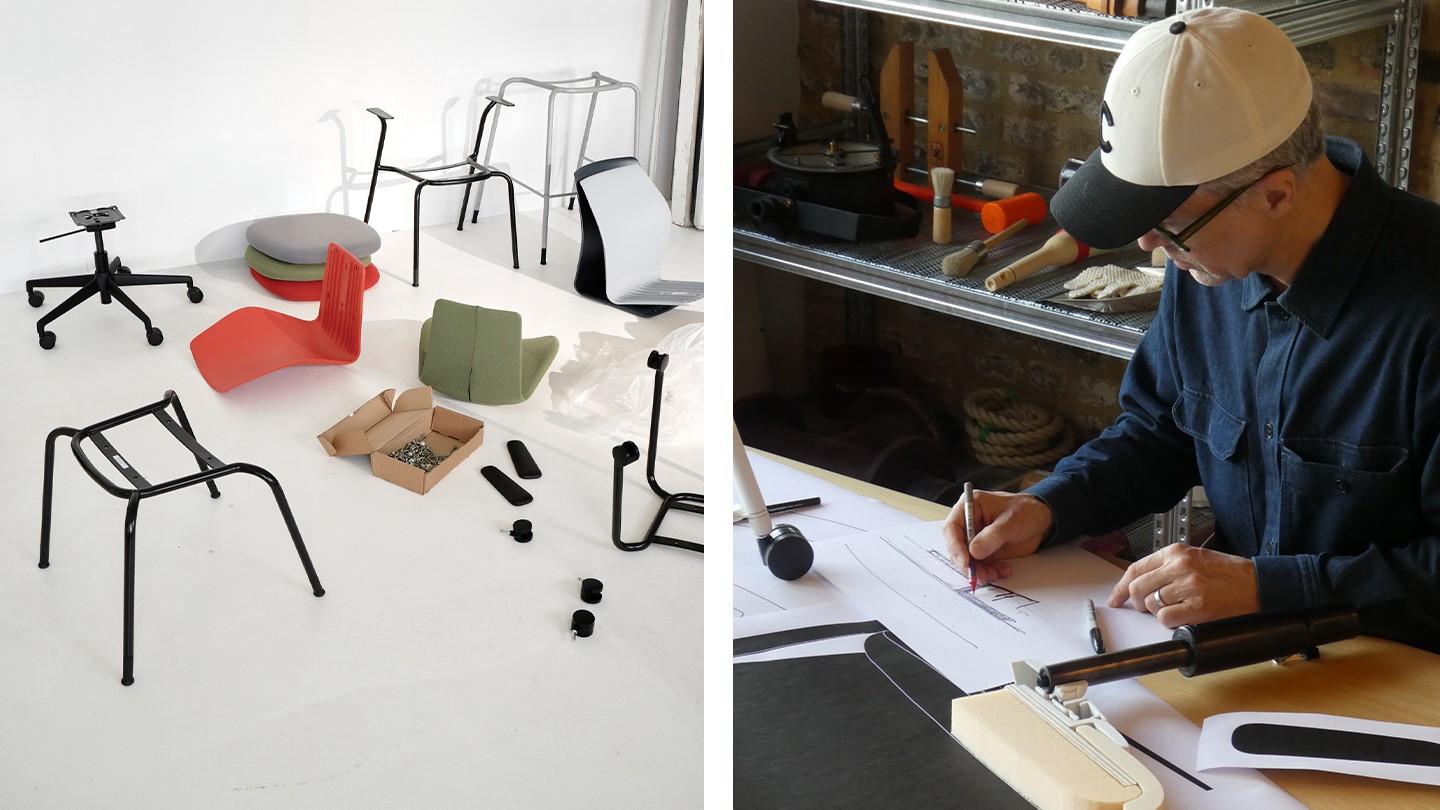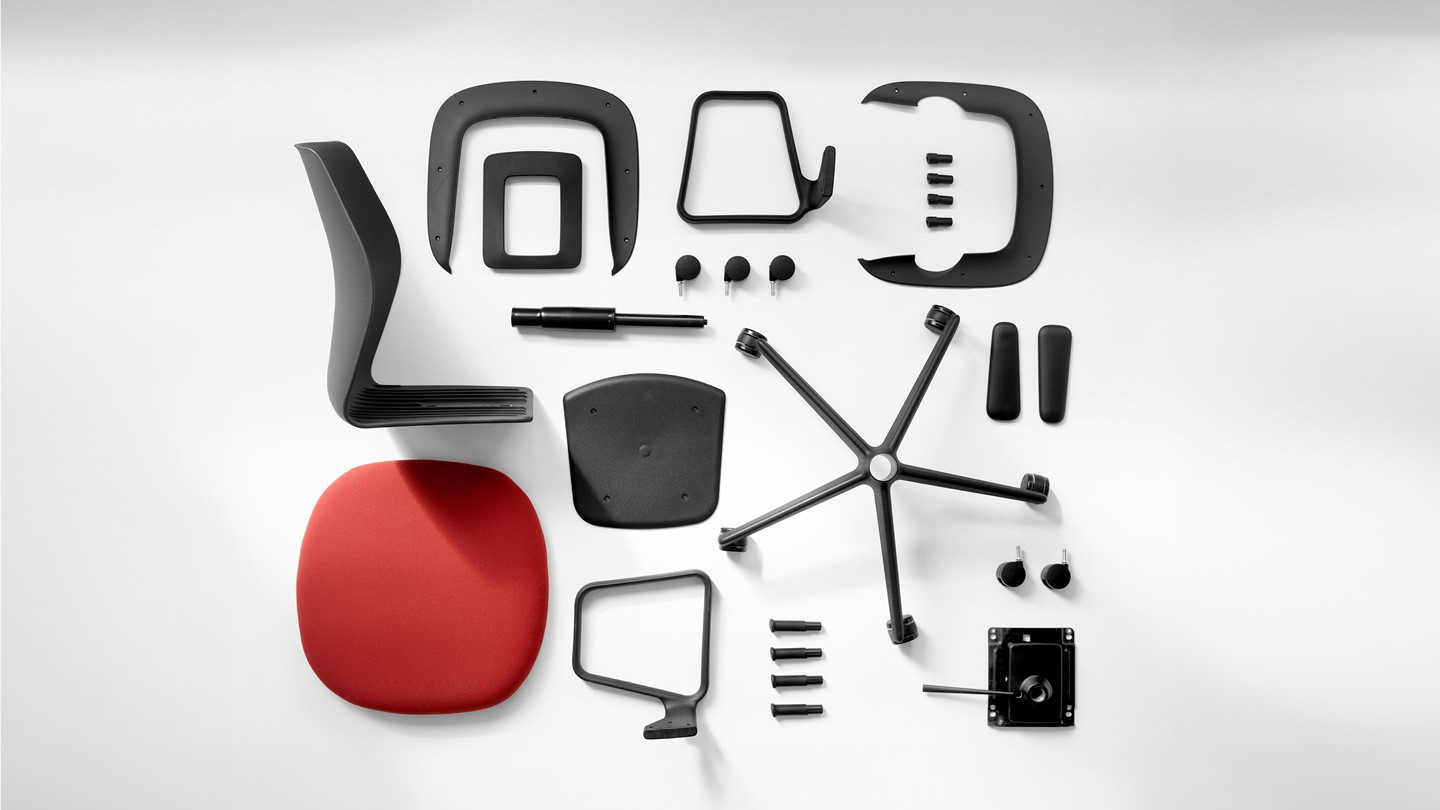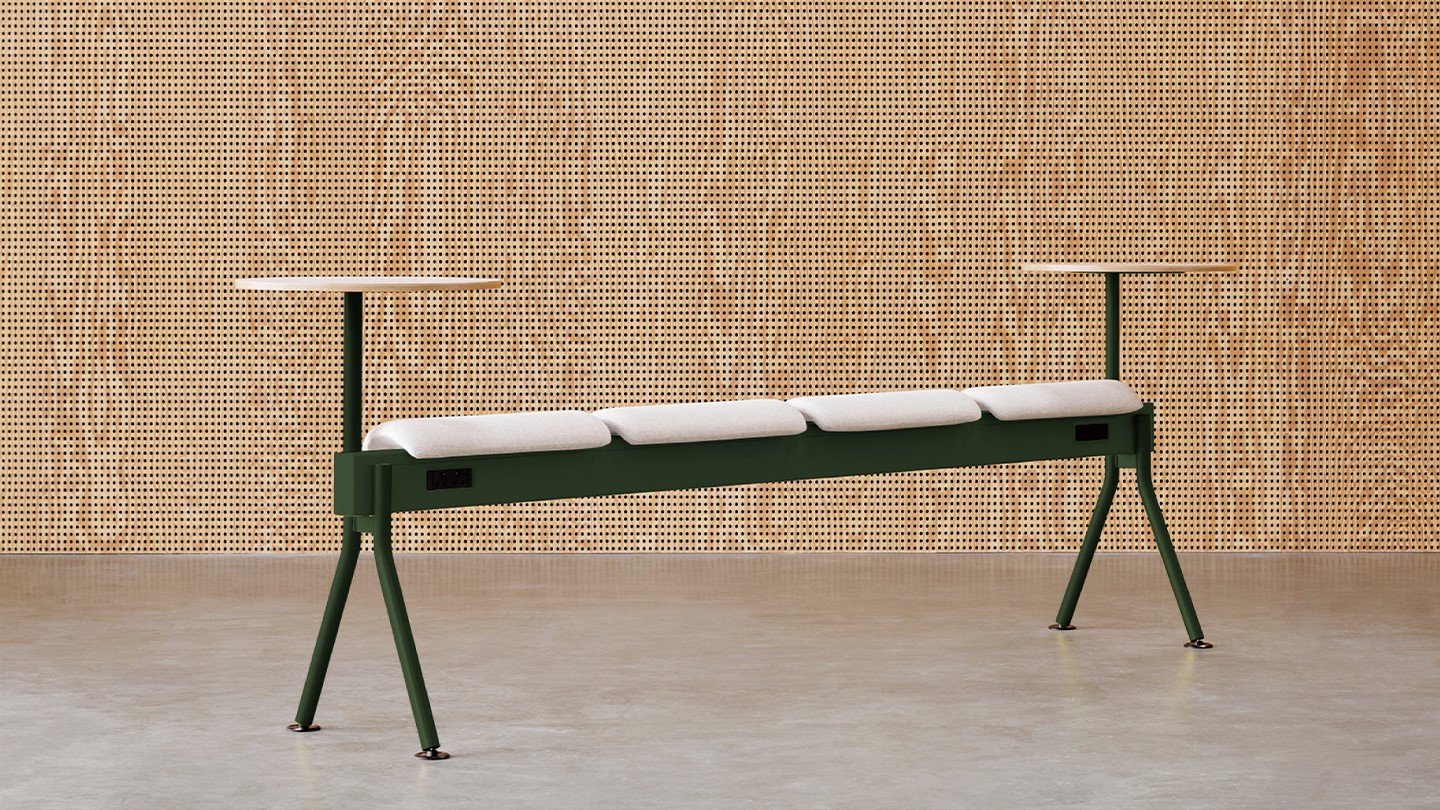Material Change by Pearson Lloyd.


Established in 1997, Pearson Lloyd is a design studio based in east London specialising in industrial and product design, furniture and interiors. The studio’s work ranges from research, objects, aviation, public realm and interior design projects, with the goal to tackle global economic and environmental challenges.
In 2023, as part of Pearson Lloyd’s ongoing research to improve the circularity of mass produced products, they reviewed how their material palette had changed over the past decade in response to the emerging circular economy. Collecting their thoughts into an essay and later exhibition, ‘Material Change’.


Contour (L)
The 2002 Design Council Annual Review stated that 80% of the environmental impact of a product is defined at the design stage. Today we realise that our choice of materials and the way we use them is affecting our planetary future.
We must all confront the impact of our work and take action. It’s time to make a material change to the way we act as designers.
Materials are the foundations of all physical products. In the preindustrial era, our every-day needs were provided for by local craftspeople working with local materials – animal, vegetable and mineral – available in their natural environment. Material sources were nurtured and maintained to ensure a sustainable supply, and production ‘waste’ was largely returned to the land whenever feasible, renewing the cycle. The aesthetics that emerged from these processes were a natural by-product of the craft techniques and functional characteristics of the materials, which developed into archetypes that have sustained for millennia.
Since the industrial revolution dramatically accelerated our exploitation of the world’s natural resources, the majority of materials used in mass production have derived from virgin sources extracted from the earth. Within our living memory, and certainly in the last two generations characterised by mass consumption, material selection for a product was a relatively straightforward – and apparently benign – process. Timber, aluminum, steel, plastic, textile, glass…materials were selected on the basis of price and functionality, lead times and reflected investment in tooling, minimum order quantities (MOQs), expected sales and colour selection. Rather than using regenerative materials, grown by nature using solar energy, we have been extracting and refining cheap materials such as oil, where the cost lies in labor and extraction processes rather than the true value of a precious, finite resource.
In the last 20 years, the development of a truly global supply chain further opened up international channels of supply that were handled by agents and procurement teams based on classical tender processes. The ‘outsourcing’ of material supply and production to remote and often opaque centers of industry had the unintended consequence of clouding our understanding of the impact of these decisions and the damage done to both human and planetary health.
The climate emergency that we are now experiencing has forced us all to consider what we must change to reduce and reverse our impact on our ecosystem.


Contour
01. Design with waste materials.
The decision making process of circular design goes far beyond the simplistic matrix of form, function, quality, time and price. Different materials, manufacturing techniques and supply chains can have global warming potentials that vary by as much as 10x.
Understanding the relative impact of material choices in terms of carbon dioxide equivalence (CO2e) presents essential data for designers. Setting benchmarks and goals with clients gives us the opportunity to limit the impact of products on the health of our planet.
02. Design for circularity.
Plywood has been a dominant material in upholstered furniture frames for decades. As a composite material with 25% of its weight derived from glues, plywood is effectively a single-use material.
As a circular alternative to traditional upholstery framing Pearson Lloyd found that REPP (recycled expanded polypropylene) can be molded into structures and assembled using reversible fixings that allow material separation, recovery and recycling at end-of-life.
03. Design for self-assembly.
In the past, almost all quality furniture was delivered to the customer as a finished and complete product. As brands have globalised, this model created highly inefficient transportation networks.
By transferring assembly to the user, it’s possible to radically reduce the carbon and financial costs associated with transport and enable repair of the product at a later date when damaged or worn.
04. Design with bio-based materials.
Most soft upholstered furniture is designed to use polyurethane foam for comfort, which, as a thermoset plastic, cannot be easily recycled.
By using biodegradable and regenerative materials we can reduce the amount of extractive resources used in furniture production. Bio-based materials reduce the industry’s reliance on fossil-fuel raw materials, which delivers a significant CO2e saving, reducing impacts on global warming.


CoLab
05. Design for repair.
Complex upholstery is a barrier to maintenance and repair, which shortens product life cycles and creates extreme waste.
Such waste can be easily avoided by ensuring each component in the furniture's system is repairable, as seen on CoLab for Senator. In addition, exposed fixings promote easy assembly and on-site replacement of parts. With reversible assemblies, parts that do reach end-of-life can be removed and recycled.
06. Design with new technologies.
Traditional upholstery techniques use layers of different materials to create an often inseparable stack of composite subframes, foams, springs, glues and textiles.
The potential of 3D knitting to replace composite upholstery with a demountable mono-material fabric on a lightweight frame is an example of how technology can support the transition to a zero waste and low-carbon future.
07. Design with mono-materials.
Molded-shell chairs are traditionally manufactured using glass-fiber reinforced plastic to deliver enough strength within a lightweight form. These composite materials cannot be broken down into their constituents
to be recycled, creating huge amounts of waste.
By using 100% fiber-free polypropylene, these shells can be recycled for reuse.
Discover the Senator products designed by Pearson Lloyd by clicking below: